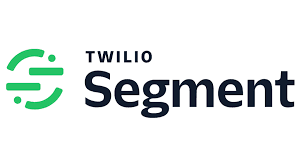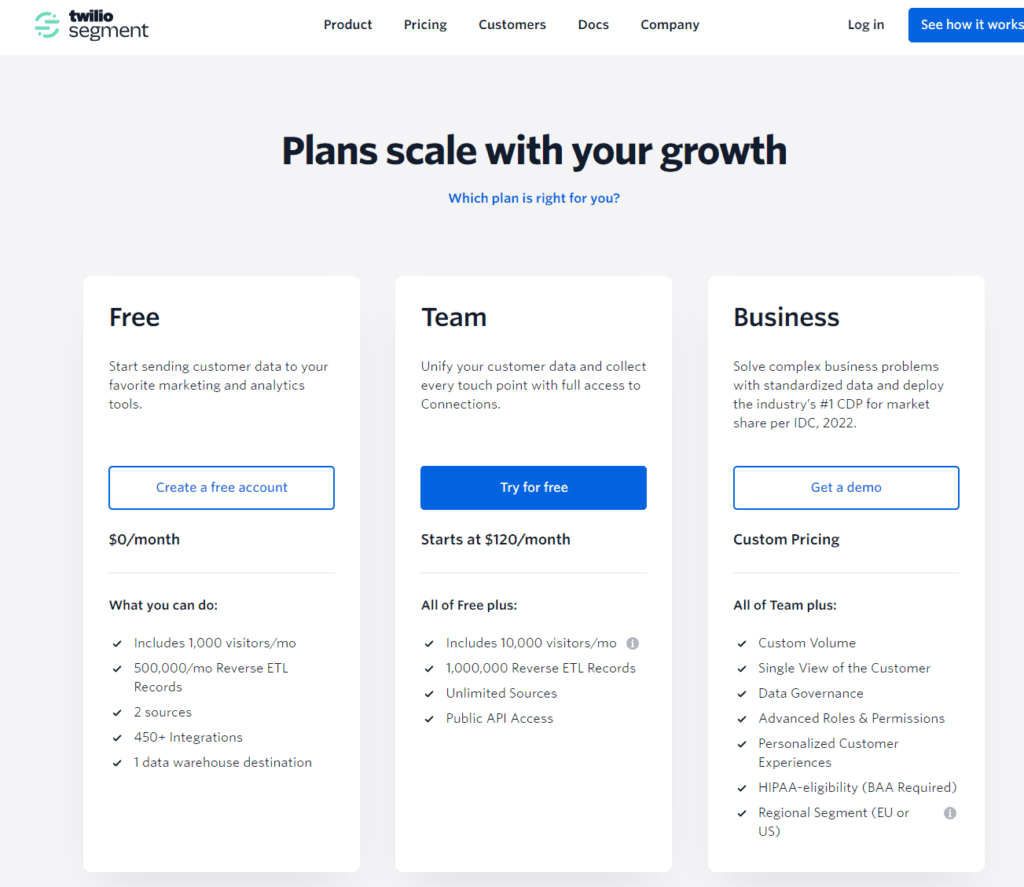In the digital age, where data is the cornerstone of strategic decision-making, choosing the right analytics tool is more than a necessity—it’s a pivotal decision that can shape the future trajectory of your business. In this context, Segment and Baremetrics stand out as two leading analytics platforms, each offering unique capabilities tailored to different business needs. While Segment shines as a comprehensive customer data platform (CDP) designed to collect, unify, and distribute your data across multiple tools, Baremetrics focuses on providing direct, insightful analytics specifically for subscription-based businesses. This initial comparison offers a glimpse into the diverse landscapes these tools inhabit, setting the stage for a deeper exploration of their strengths and differences.
Segment | Baremetrics |
|---|---|
| G2 Score – 4.6 out of 5 stars | G2 Score – 4.6 out of 5 stars |
| TrustRadius Score – 8.3/10 | TrustRadius Score – 10/10 |
Financial Metrics and Reporting
In today’s subscription economy, having a clear understanding of your financial health and metrics is paramount. This encompasses everything from revenue analysis to churn rates, lifetime value (LTV), and beyond. How Segment and Baremetrics cater to these needs varies significantly, reflecting their foundational differences and primary objectives.
Segment: The Data Integration Maestro
Segment’s approach to financial metrics and reporting is inherently tied to its role as a data facilitator. It doesn’t directly generate financial reports or insights. Instead, Segment excels in aggregating and routing detailed customer interaction data to specialized analytics and financial reporting tools. This means the depth and breadth of financial analysis available through Segment depend largely on the external tools you integrate with.
For businesses leveraging a complex stack of tools for different analytics and financial reporting needs, Segment offers unparalleled flexibility. It acts as the backbone of your data strategy, ensuring all platforms in your tech stack have access to the same unified customer data. This capability allows for comprehensive financial analysis across various platforms but requires businesses to invest in and manage multiple tools to fully understand their financial health.
Baremetrics: Subscription Analytics Simplified
Baremetrics is designed specifically with subscription-based businesses in mind, providing a suite of financial analytics tools directly within its platform. It offers out-of-the-box insights into crucial financial metrics such as monthly recurring revenue (MRR), churn rate, LTV, and customer segmentation based on revenue. The platform stands out for its ability to present these complex metrics in an accessible, easy-to-understand manner, making it an invaluable resource for businesses looking for immediate insights into their financial health without the need for additional analytics tools.
Baremetrics’ focus on subscription metrics also means it offers unique features tailored to this business model, such as cohort analysis, churn prediction, and revenue forecasting. These capabilities provide businesses with not just a snapshot of their current financial performance but also insights into future trends and potential growth areas.
Customer Segmentation and Retention Analysis
In the realm of digital business, particularly for subscription models, identifying different customer segments and understanding their behavior over time can significantly impact retention strategies and ultimately, revenue growth. Let’s see how Segment and Baremetrics approach these crucial analytics components.
Segment: Building Blocks for Advanced Segmentation
Segment provides a robust foundation for detailed customer segmentation by collecting and unifying data from every customer touchpoint. This capability allows businesses to create highly specific segments based on a wide array of behaviors, demographics, and custom events. The strength of Segment lies in its flexibility and the depth of data it can harness, which is particularly valuable for businesses with diverse customer bases and complex interaction models.
While Segment itself does not directly analyze retention, it enables businesses to feed detailed customer data into specialized analytics and marketing tools that can. This approach offers businesses the flexibility to use their preferred tools for retention analysis and targeted engagement strategies, relying on Segment to ensure that all those tools have access to consistent, comprehensive customer data.
Baremetrics: Direct Insights into Customer Retention
Baremetrics stands out for its direct approach to customer segmentation and retention analysis, specifically designed for subscription-based businesses. The platform offers out-of-the-box insights into customer behavior, including churn rate analysis, LTV calculations, and cohort analysis, which can be pivotal for understanding how different segments of your customer base engage with your service over time.
One of the key features of Baremetrics is its ability to provide immediate, actionable insights into retention and churn. Businesses can quickly identify at-risk customers or segments that are not performing well and use this information to develop targeted retention strategies. This focus on providing direct, relevant insights makes Baremetrics a powerful tool for businesses looking to closely monitor and improve their customer retention rates without the need for additional analytics platforms.

Related: Check out our free SEO suite

User Experience and Interface
The design and user interface of an analytics platform play a crucial role in its adoption and effectiveness. A well-designed UI/UX can simplify complex data analysis, making it accessible to users across the organization, regardless of their technical expertise.
Segment: Complexity Behind Simplicity
Segment’s user interface is designed to handle complex data integrations through a relatively straightforward UI. It focuses on simplifying the process of setting up data sources, destinations, and transformations, making it accessible for users who may not have deep technical knowledge. The platform aims to demystify data integration, providing clear navigation and documentation to guide users through the setup process.
However, the simplicity in Segment’s interface does not detract from the complexity of tasks it can perform. Setting up intricate data pipelines, ensuring data consistency across multiple tools, and managing real-time data flows are tasks made manageable through Segment’s UI. This balance between simplicity and functionality is a hallmark of Segment’s design, catering to both technical users looking to delve into complex data integrations and non-technical users needing to understand the basics of their data flows.
Baremetrics: Tailored for Clarity and Insight
Baremetrics’ user interface shines in its clarity and focus on presenting financial metrics and insights. Designed specifically for subscription-based businesses, its dashboard and reporting tools are crafted to highlight key performance indicators (KPIs) and trends that matter most to businesses tracking subscription revenue, churn, and customer behavior.
The strength of Baremetrics’ UI/UX lies in its ability to make complex financial data easily digestible. With visualizations, trend lines, and segmented data reports, Baremetrics presents data in a way that’s immediately actionable for decision-makers. This focus on accessibility ensures that business leaders, marketers, and product managers can quickly grasp their financial health and make informed decisions without needing to navigate through complex analytics setups.
Scalability and Growth Support
The ability of an analytics platform to scale and support business growth is critical. This encompasses not just handling increasing volumes of data, but also adapting to new business models, markets, and the ever-changing digital landscape.
Segment: Designed for Scalability
Segment is built with scalability at its core. It supports businesses from startup to enterprise level, managing data flows that range from simple website tracking to complex interactions across multiple digital touchpoints. As businesses grow, Segment’s infrastructure can handle increasing data volumes without sacrificing performance, ensuring data integrity and timely delivery to integrated tools.
Moreover, Segment’s extensive integration ecosystem means it can adapt to the evolving tech stack of a growing business. New tools can be easily added to the data pipeline, and Segment’s flexibility ensures that businesses can pivot their strategies without being constrained by data infrastructure limitations. This makes Segment an ideal choice for businesses anticipating rapid growth or significant changes in their operations and data needs.
Baremetrics: Focused Support for Subscription Businesses
Baremetrics, while more niche in its focus on subscription metrics, offers scalability within its domain. It excels at providing insights into financial health, user behavior, and subscription dynamics, which become increasingly complex as businesses grow. Baremetrics scales to accommodate the growing data needs of subscription businesses, offering more detailed analytics and forecasting as customer bases expand.
The platform also adapts to the changing needs of businesses by introducing new features and metrics relevant to the subscription model, ensuring that companies can continue to derive valuable insights regardless of their growth stage. Baremetrics’ commitment to supporting subscription businesses makes it a scalable solution for companies in this space, providing the analytics and insights necessary to navigate expansion and market evolution.
Innovation and Future-Proofing
The commitment of an analytics platform to continuous innovation and its ability to future-proof its offerings can significantly impact its long-term value to businesses. This involves regular updates, introduction of new features, and adaptation to emerging technologies and market demands.
Segment: Leading with Connectivity and Flexibility
Segment’s approach to innovation is evident in its ongoing expansion of integrations and enhancements to data management capabilities. By staying at the forefront of data connectivity and flexibility, Segment ensures businesses can capture, process, and utilize their data in increasingly sophisticated ways. This focus on enhancing data infrastructure makes Segment a tool that not only addresses current analytics needs but also prepares businesses for future challenges and opportunities.
Furthermore, Segment’s commitment to embracing emerging technologies and trends, such as machine learning algorithms for predictive analytics or enhanced privacy features for compliance with new regulations, positions it as a forward-thinking platform. This orientation towards future-proofing ensures that businesses relying on Segment can adapt to changes in the digital landscape without overhauling their data strategy.
Baremetrics: Specialized Innovation for Subscription Analytics
Baremetrics’ innovation efforts are deeply focused on providing advanced analytics for subscription-based businesses. The platform regularly introduces new features and metrics specifically designed to offer deeper insights into aspects like customer lifetime value, churn prediction, and revenue forecasting. This specialization in subscription analytics means Baremetrics is uniquely positioned to support businesses in this sector with cutting-edge tools and insights.
Moreover, Baremetrics stays ahead of industry trends by incorporating feedback from its user base into its development process, ensuring that its offerings remain relevant and valuable to subscription businesses. This user-driven innovation strategy helps Baremetrics anticipate and address the evolving needs of its customers, making it a future-proof choice for businesses looking for detailed insights into their subscription models.
Pricing
Segment:

Baremetrics:

Conclusion
Choosing the right analytics tool between Segment and Baremetrics hinges on understanding your specific business needs, both present and future. Segment stands out for businesses seeking a comprehensive data integration platform that can scale and adapt to evolving tech landscapes, making it ideal for those with broad, multi-faceted data strategies. Its commitment to innovation ensures businesses are always at the forefront of data management capabilities. On the other hand, Baremetrics shines for subscription-based businesses in need of specialized analytics focused on financial metrics, customer behavior, and growth forecasting. Its user-driven innovation and focus on subscription analytics ensure that businesses can dive deep into the metrics that matter most to them.
In essence, the decision boils down to the scope of your analytics needs and the nature of your business model. Segment offers a versatile, future-proof solution for wide-ranging data integration, while Baremetrics provides targeted insights that empower subscription businesses to grow and adapt in a dynamic market. Both platforms excel in their respective domains, offering powerful tools to leverage data-driven insights for strategic decision-making and growth.
Read Next:
- GetResponse vs Zoho Campaigns: The Best Email Marketing Tool for 2024
- AWeber vs ActiveCampaign: The Best Email Marketing Tool
- Constant Contact vs Campaigner: Best Email Marketing Tool
- GetResponse vs Omnisend: The Best Email Marketing Tool for 2024
- AWeber vs Benchmark Email: The Best Email Marketing Tool






















Comments are closed.